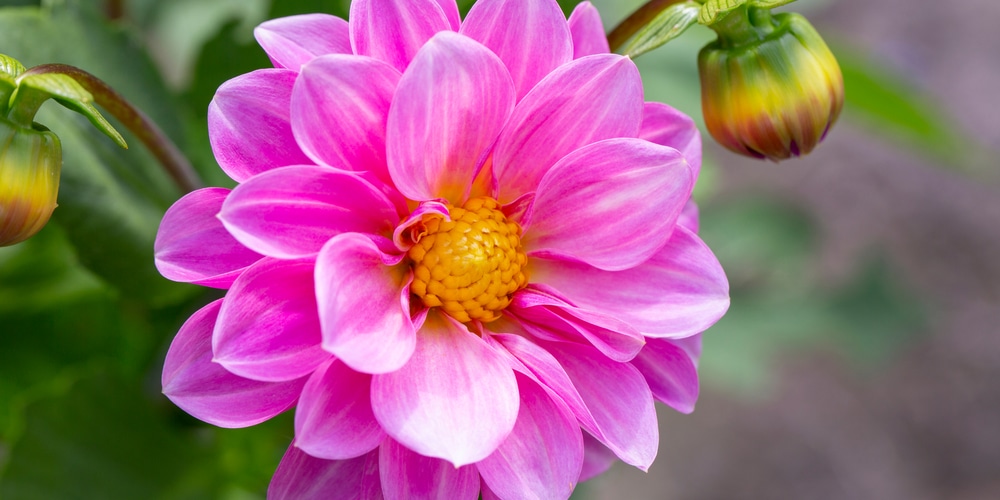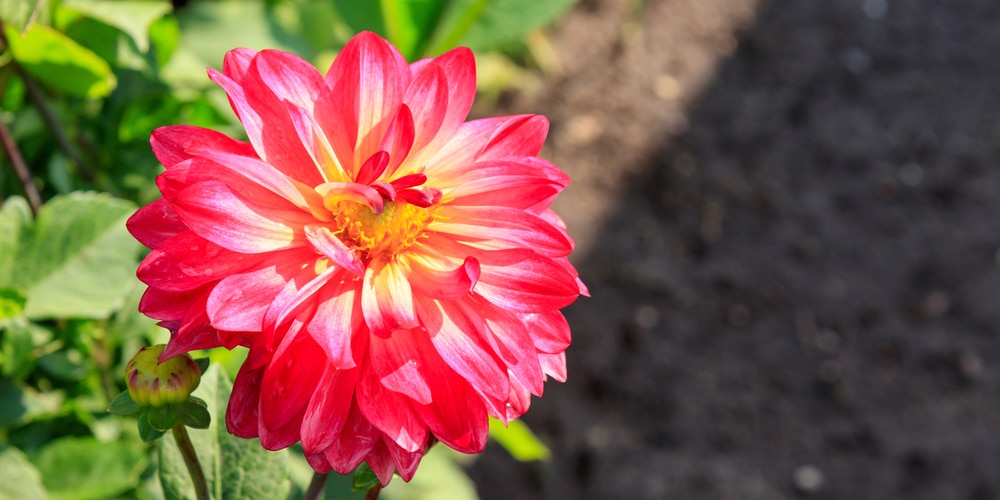Are dahlias perennials or annuals? This is a question that many gardeners have asked themselves at one time or another.
As with so many things in life, the answer is it depends.
Dahlias can be either perennials or annuals, depending on the climate and the care they receive.
The Basics
First, let’s start with the basics. What are the differences between annuals and perennial plants?
Annuals are plants that live for one growing season and then die. They must be replanted every year.
On the other hand, perennials are plants that live for two or more years. Once they are established, they will come back year after year with minimal care from you.
A tender perennial, on the other hand, is a plant that is technically a perennial but does not survive freezing temperatures. This means that in colder climates, they must be treated as annuals and replanted every year.
Dahlias: Perennials or Annuals?
Now that we know the difference between annuals and perennials let’s talk about dahlias. Dahlias are native to Mexico, where the climate is warm all year round. This means that in their natural habitat, they are perennial plants. However, they must be treated as annuals when grown in colder climates.
USDA hardiness zones 6 and lower
Dahlias are annuals in USDA hardiness zones 6 and lower. Digging up the tuberous roots after late summer blooms and storing them over winter allows for reblooming the following year.
USDA hardiness zone 7
Dahlias are a beautiful addition to any garden, with their wide range of colors and distinctive blooms. However, in regions where the winters are cold, dahlia plants may not survive unless you take steps to protect the dahlia tuber—the tuberous roots that lie beneath the soil.
In these regions, dahlia is considered a tender perennial. To be safe, you may want to overwinter your dahlias by digging up the tuberous roots and storing them indoors in a cool, dry place.
USDA hardiness zones 8 or 9,
These provide the ideal conditions for dahlias to overwinter, but they will need some protection from the cold. After the first frost, cut back the foliage and cover the root zone with several inches of mulch. This will help to insulate the tubers and prevent them from freezing.
USDA hardiness zone 10
USDA hardiness zone 10 is a dream come true for dahlia lovers. This climate region, which stretches across the southernmost parts of the country, rarely experiences temperatures below 20 degrees Fahrenheit. As a result, dahlias can be left in the ground as perennials.
All you need to do is give them extra care in late autumn to prepare them for winter. Come spring, they’ll reemerge and provide you with another season of beautiful blooms.
When To Plant Dahlias
Many gardeners are hesitant to plant dahlias, fearing they will be challenging to care for. However, with some planning, dahlias can be a welcome addition to any garden. The key is to plant them at the right time.
Dahlias should be planted in late spring or early summer after the danger of frost has passed. They should be placed in a spot that receives full sun and has well-drained soil. Once they are in the ground, dahlias must be watered deeply and regularly, especially during hot, dry weather.
How To Make Dahlias Bloom More
While dahlias are generally easy to care for, there are a few things you should keep in mind if you want them to thrive and produce more blooms.
First, dahlias need a good supply of nutrients to produce an abundance of beautiful blooms. Applying an all-purpose 5-5-5 fertilizer at planting time is recommended, and then feeding your plants once or twice a month with a low nitrogen liquid fertilizer. This will help to keep your plants healthy and encourage them to produce plenty of flowers.
Second, dahlias need to be deadheaded regularly. Deadheading is the process of removing spent blooms from the plant. This encourages the plant to produce more flowers and keeps it looking tidy.
Finally, pinch off the tiny buds that develop next to the central flower. This technique, known as debudding, encourages plants to focus their energy on producing fewer but larger blooms.
While removing potential flowers from your plant may seem counterintuitive, debudding can result in a more impressive display.
In addition, debudded plants are often more vigorous and disease-resistant than those allowed to produce numerous small blooms.
Conclusion
Dahlias are a beautiful addition to any garden, but it’s essential to know whether they are annuals or perennials in your region.
Dahlias grown in colder climates need to be treated as annuals, while those grown in warmer regions can be left in the ground as perennials. Dahlias can provide you with many weeks of stunning blooms with a little care and attention.


